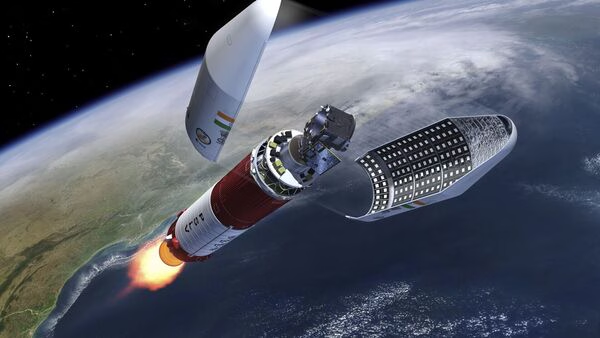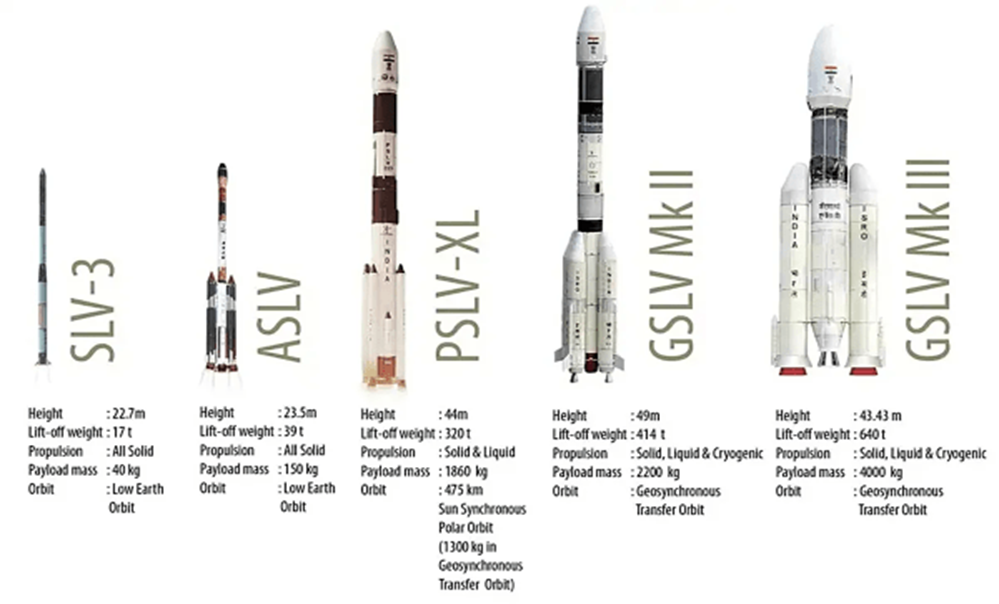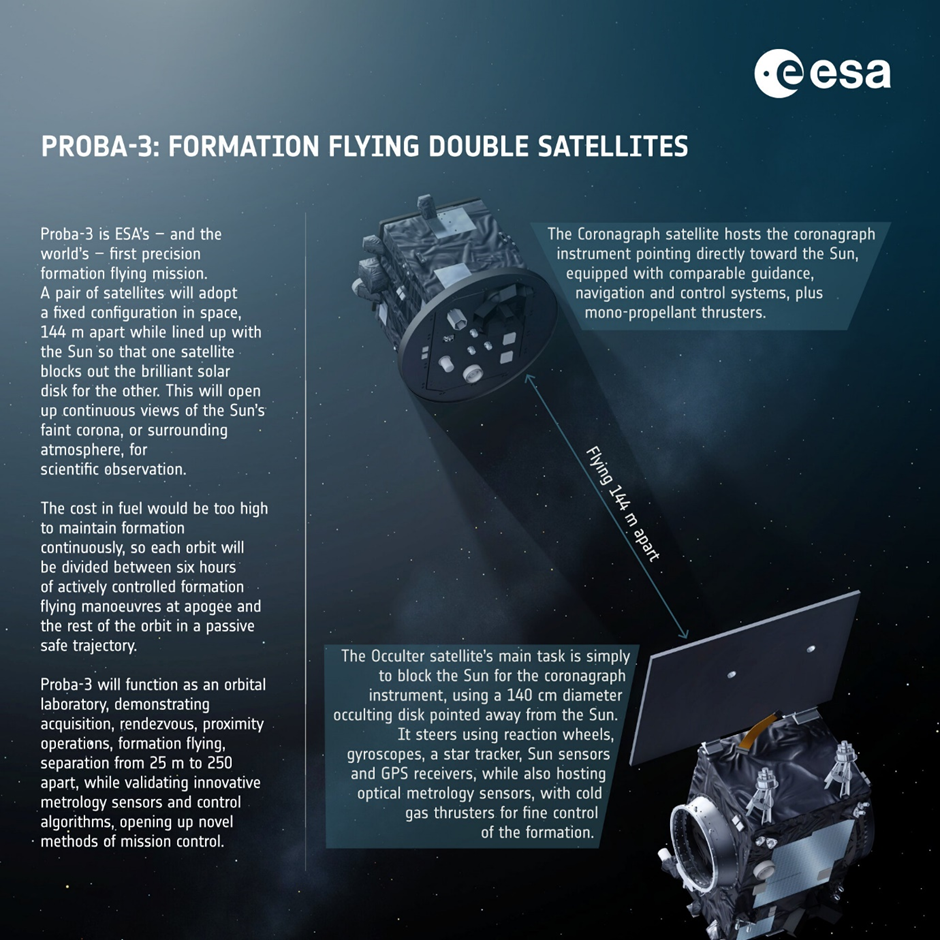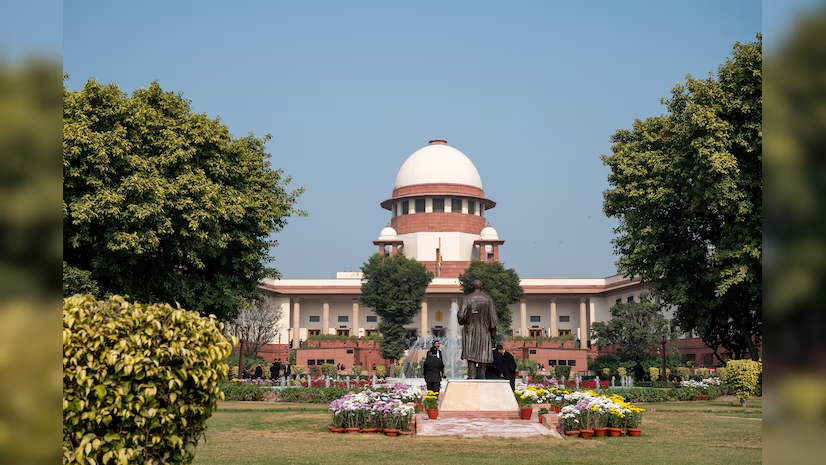- Courses
- GS Full Course 1 Year
- GS Full Course 2 Year
- GS Full Course 3 Year
- GS Full Course Till Selection
- Online Program
- GS Recorded Course
- NCERT (Recorded 500+ Hours)
- Polity Recorded Course
- Geography Recorded Course
- Economy Recorded Course
- AMAC Recorded Course
- Modern India, Post Independence & World History
- Environment Recoded Course
- Governance Recoded Course
- Science & Tech. Recoded Course
- International Relations and Internal Security Recorded Course
- Disaster Management Module Course
- Ethics Recoded Course
- Essay Recoded Course
- Current Affairs Recoded Course
- CSAT
- 5 LAYERED ARJUNA Mentorship
- Public Administration Optional
- ABOUT US
- OUR TOPPERS
- TEST SERIES
- FREE STUDY MATERIAL
- VIDEOS
- CONTACT US
ISRO Launched European Space Agency's Proba-3 Solar Mission
ISRO Launched European Space Agency's Proba-3 Solar Mission

What are the Proba series of missions?
- The Proba missions are a series of IOD (in-orbit demonstration) missions from the European Space Agency, for demonstrating and validating new technologies and concepts in orbit.
- They are based on small satellites, embarking payload and instruments to deliver actual data to users to demonstrate a new capability.
- They are developed under the General Support Technology Programme (GSTP) of ESA.
- Proba-1, launched by ISRO in 2001, an Earth observation satellite with advanced on-board autonomy and embarked an innovative hyperspectral instrument. It has been operational for more than 20 years.
- Proba-2, launched in 2009, is observing the Sun, with more than 20 technology payloads and scientific instruments.
- Proba-V (for Vegetation), launched in 2012, it flies an innovative Earth imager, for multi-spectral global vegetation mapping.
Current Context
- On December 5, 2024, the Indian Space Research Organisation (ISRO) successfully launched PSLV-C59/PROBA-3 mission (a European Space Agency’s mission) on its PSLV rocket to study the solar corona, the outer most and hottest part of the Sun’s atmosphere, from Sriharikota.
- The mission will attempt the first-ever “precision formation flying”, where 2 satellites will fly together and maintain a fixed configuration in space.
- This is the latest solar mission in ESA’s Proba suite of missions.
- Its predecessors Proba-1 launched by ISRO in 2001 and Proba-2 launched by Eurockot in 2009.
- Teams of scientists from Spain, Belgium, Poland, Italy and Switzerland have worked on Proba-3.
What is Proba-3?
- Proba-3, Developed at an estimated cost of 200 million euros.
- Proba-3 has an expected mission life of two years.
- It will be launched into a highly elliptical orbit measuring around 600 x 60,530 km and have an orbital period of 19.7 hours.
- Imagine throwing a ball really hard. Instead of going in a perfect circle, it goes up really high and then comes back down close to you before going up high again. That's kind of like the path ESA's Proba 3 will take around Earth.
- Elliptical Orbit: This means the path isn't a perfect circle, but more like an oval.
- 600 x 60,530 km: These numbers tell you how far away the proba-3 will be from Earth at its closest point (600 km) and its farthest point (60,530 km). So, it gets really close and then goes really far away.
- Orbital Period of 19.7 hours: This means it takes about 19.7 hours for the proba-3 to complete one full loop around the Earth.
- So basically, Proba 3 will be zooming around Earth in a stretched-out oval path, getting super close and then super far away every 19.7 hours.
- The mission is designed with two satellites that will be launched together, separate from each other and then fly in tandem. They will then form a solar coronagraph, an instrument that helps block out the bright light emitted by the Sun to reveal the objects and atmosphere around it.
What will Proba-3 study?
- Due to the corona’s temperature, going upto 2 million degrees Fahrenheit, it is difficult for any instrument to observe it closely.
- However, it is important for scientific study, as all space weather and its associated turbulences — solar storms, solar winds, etc. — originate from the corona.
- These phenomena influence space weather and can potentially interfere with the smooth operations of all satellite-based communications, navigation, and power grids on Earth. To study these, Proba-3 will have three instruments onboard:
- The Association of Spacecraft for Polarimetric and Imaging Investigation of the Corona of the Sun (ASPIICS) or the coronagraph. Its field of view is between the Sun’s outer and inner corona, a circular belt normally observable during solar eclipse events.
- The instrument has a 1.4 metre diameter occulting disk mounted on it, to block the Sun’s light and facilitate a close-up view of this belt.
- The Digital Absolute Radiometer (DARA) will maintain a continuous measurement of the Sun's total energy output, known as the total solar irradiance.
- The 3D Energetic Electron Spectrometer (3DEES) will measure electron fluxes as it passes through Earth's radiation belts, providing data for space weather studies.
Why do we study the corona?
- The solar corona has many mysteries associated with it, starting with the counter intuitive fact that the corona is more than a million degrees warmer than the surface of the Sun underneath it.
- It is a major focus of scientific research and study, not only to improve our understanding of the Sun, but also as the origin of solar weather, such as coronal mass ejections or solar storms which can affect the functioning of satellites, or communication and power networks down on Earth.
Why is Proba-3 unique?
- The two satellites — Occulter Spacecraft (weighing 200 kg) and the Coronagraph Spacecraft (weighing 340 kg) — will mimic a natural solar eclipse.
- They will manoeuvre precisely in Earth's orbit so that one satellite casts a shadow onto the other.
- A naturally occurring solar eclipse allows solar physicists to observe and study the Sun's corona for 10 minutes, across an average of about 1.5 eclipse events per year.
- Proba-3 will give six hours, equivalent to 50 such events annually, which will help deepen understanding of the Sun's corona like never before.
- Both the Occulter and Coronagraph will face the Sun at all times. They will maintain a formation of a few millimeters and then move to a position where they will be 150 meters for six hours at a time.
- One satellite will act as a viewing telescope, kept at the centre of a shadow cast by the other satellite positioned 150 meters away. This positioning will facilitate observing the Sun's corona and will be autonomously achieved through precise flight formation.
- If done successfully, the Occulter will create an artificial yet stable eclipse by masking large parts of the Sun.
- As a result, the Sun's blinding light will be blocked, and only the solar corona will be visible to the Coronagraph, which will photograph and facilitate studies of the lesser-known features.
Why is the mission being launched from India?
India's PSLV-XL launcher was chosen since the lift required to place the combined Proba-3 satellites (550 kg) on their desired highly elliptical orbit is above the capability of ESA's Vega-C launcher, while Ariane-6 would be too costly.
How might India benefit?
- Proba-3 is being called ESA's technology demonstration mission.
- The fact that ISRO has been designated to launch the mission demonstrates India's reliable space launch facilities and growing space capabilities. A cost-effective launch is also one of the highlights of the mission.
- There is a strong possibility that the Indian solar physicist community will get exclusive access to the Proba-3 data.
- A few Indian solar physicists have also been involved in conceptualising the scientific goals of this mission along with their Belgian counterparts.
- Soon after the launch, India plans to host a meeting with the ESA's Proba-3 team to explore opportunities for using data from Aditya L1, India's first mission to the Sun (launched in 2023) and Proba-3 for collaborative research.
- This would allow Indians to work towards and contribute to newer scientific advancements related to the Sun.
Polar Satellite Launch Vehicle (PSLV)
1. The PROBA-3 Mission is the 61st flight of PSLV and the 26th using PSLV-XL configuration which is set to launch the spacecraft into a highly elliptical orbit as a Dedicated commercial mission of NewSpace India Limited (NSIL).
2. The Polar Satellite Launch Vehicle (PSLV) is the third generation of Indian satellite launch vehicles, first used in 1994. More than 50 successful PSLV launches have taken place to date. It has also been called “the workhorse of ISRO” for consistently delivering various satellites into low earth orbits (less than 2,000 km in altitude) with a high success rate.
3. PSLV-XL can lift 1,750 kg of payloads to the sun-synchronous polar orbit (spacecraft here are synchronised to always be in the same ‘fixed’ position relative to the Sun), and much more — 3,800 kg — to a lower Earth orbit (normally located at an altitude of less than 1,000 km but could be as low as 160 km above the planet).
4. PSLV has successfully launched two spacecraft Chandrayaan-1 in 2008 and Mars Orbiter Spacecraft in 2013. The launch of PSLV-C48 marks the 50th Launch of PSLV. Aditya-L1 mission, weighting 1,472 kg, was launched by PSLV-C57.
PROBA-3 FACTS SHEET
|
Proba-3 facts and figures |
|
|
Launch date: |
December 04, 2024 |
|
Mass: |
Coronagraph spacecraft 340 kg; Occulter spacecraft 200 kg |
|
Orbit: |
High Earth orbit, 19.7 hours orbital period, 60 530 km apogee, 600 km perigee |
|
Instrument: |
External coronagraph |
|
Ground station: |
Mission antenna will be at Santa Maria des Azores, and ground station at Redu, Belgium |





